Trends in Social Media Video Marketing: Introduction
In today’s fast-paced digital landscape, social media video marketing has evolved from a mere option to an indispensable part of any successful marketing strategy. As we step into 2024, understanding and leveraging the latest trends in social media video marketing has become crucial for brands and content creators alike. This comprehensive guide aims to shed light on the prevailing trends in social media video marketing and how they’re revolutionizing the way we approach social media content creation.
The Evolution of Social Media Video Marketing
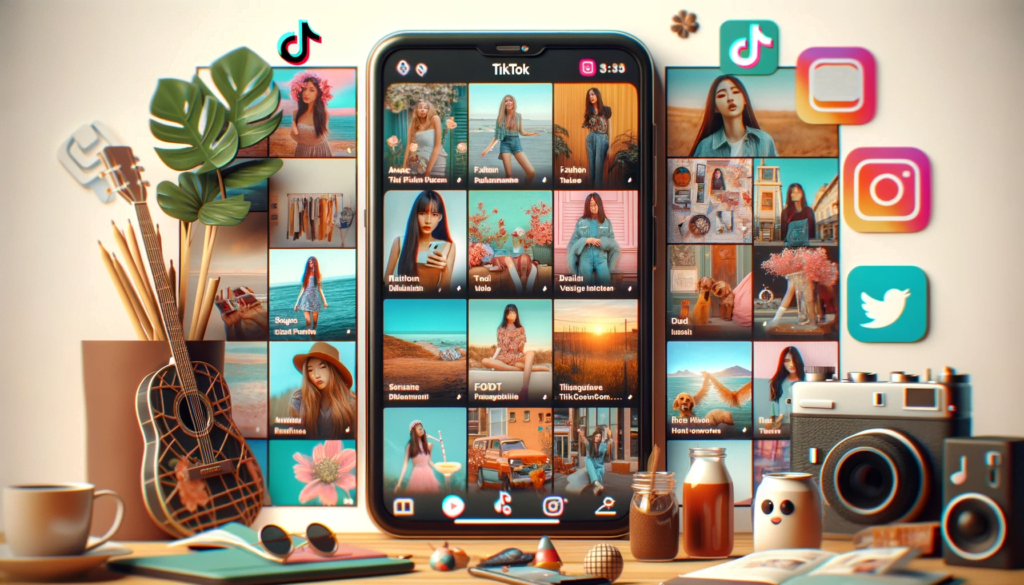
The Journey from Text to Video Dominance
The transformation of social media from primarily text-based platforms to video-centric hubs marks a significant shift in digital communication and marketing strategies. This evolution can be traced through several key stages:
- The Early Days of Social Media (Late 1990s – Early 2000s):
- Platforms like Friendster and MySpace focused mainly on text and static images. Video content was rare due to technological limitations and slower internet speeds.
- Introduction of Video Capabilities (Mid-2000s):
- The launch of YouTube in 2005 revolutionized online video sharing. Other platforms, like Facebook and Twitter, began incorporating video capabilities, though it was still secondary to text and images.
- Shift Towards Video Content (2010s):
- With increased internet speeds and smartphone usage, platforms like Snapchat and Instagram introduced features like Stories, emphasizing short video content.
- Facebook and Twitter enhanced their video features, with Facebook prioritizing video content in its algorithm.
- Rise of Video-First Platforms (Late 2010s – Early 2020s):
- TikTok emerged as a video-first platform, quickly gaining massive popularity. Its focus on short, engaging videos set a new standard for content consumption.
- Instagram responded with Reels, and YouTube introduced Shorts, emphasizing the growing importance of short-form video content.
- Current Landscape (2024):
- Video content dominates social media, with algorithms favoring it across platforms.
- Live streaming, AR/VR content, and interactive video features are becoming increasingly common.
Impactful Statistics and Trends
- User Engagement: According to a study by HubSpot, video content on social media generates 1200% more shares than text and image content combined.
- Preference for Video: A survey by Wyzowl revealed that 66% of consumers prefer watching a video to reading about a product.
- Growth of Video Consumption: Cisco predicted that by 2022, 82% of all online content would be video, a prediction that has largely come true.
Case Study: The Instagram Transformation
- Before 2016: Instagram was predominantly an image-sharing platform.
- Introduction of Stories (2016): Marked a significant shift towards video content, inspired by Snapchat’s success.
- IGTV and Reels: Further emphasized Instagram’s commitment to video content, responding to the success of YouTube and TikTok, respectively.
- Results: Since embracing video, Instagram has seen a significant increase in user engagement and time spent on the platform.
Current Trends in Social Media Video Marketing
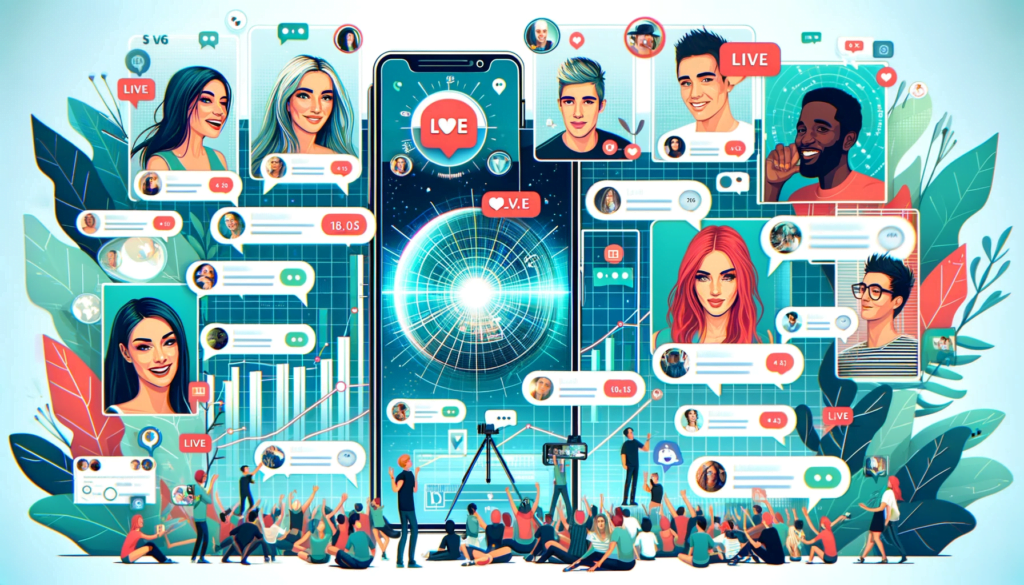
As we delve deeper into the world of social media video marketing in 2024, it’s evident that certain trends have taken the forefront, shaping how content is created and consumed.
Short-Form Videos: The Reign of Quick Content
The Surge of Short-Form Video Content
Short-form videos have rapidly become the most engaging type of content on social media, characterized by their brevity and ability to capture the audience’s attention almost instantly. This trend can be attributed to several key factors:
- Rising Popularity of Platforms like TikTok and Instagram Reels:
- TikTok’s emergence and its explosive growth have been pivotal in popularizing short-form videos. Its success prompted other platforms, including Instagram with Reels, to introduce similar features.
- The format caters to the decreasing attention span of online audiences, offering quick, digestible content.
- User Engagement and Preference:
- A study by SocialInsider indicates a higher engagement rate for short-form videos compared to other content types, with a significant preference among younger audiences.
- The format’s popularity is driven by its snackable nature, allowing users to consume a large volume of content in a short time.
- Content Creation and Consumption Trends:
- Short-form videos align well with the fast-paced lifestyle of modern consumers, fitting seamlessly into brief moments of downtime.
- They offer a creative outlet for content creators, challenging them to convey a message or tell a story concisely.
Key Features and Best Practices
- Length and Format: Typically, short-form videos range from 15 seconds to a minute. This format demands creativity and precision from creators to make an impact in a limited timeframe.
- Storytelling and Messaging: Despite their brevity, these videos must have a clear and engaging narrative or message. The first few seconds are crucial for capturing attention.
- Visual Appeal: High-quality visuals and engaging graphics are essential to stand out in a crowded social media feed.
- Calls-to-Action: Encouraging viewer interaction, such as likes, shares, or follows, is crucial for amplifying reach.
Impact on Marketing Strategies
- Brand Awareness and Reach: Short-form videos are an excellent tool for increasing brand visibility and reaching a broader audience, especially younger demographics.
- Engagement and Conversion: Due to their engaging nature, these videos can drive higher engagement rates and potentially lead to better conversion rates.
- Cost-Effectiveness: They are often less costly and time-consuming to produce than longer video formats, making them accessible for businesses of all sizes.
Case Studies and Success Stories
- Example 1: A Fashion Brand on TikTok: A fashion retailer used TikTok to showcase their clothing line through short, creative videos featuring popular music and trends. This approach led to a significant increase in website traffic and sales.
- Example 2: An Influencer’s Instagram Reels Campaign: An influencer partnered with a beauty brand to create a series of makeup tutorials on Instagram Reels. The campaign resulted in a substantial boost in engagement and followers for both the influencer and the brand.
Live Streaming Gains Momentum

The Growing Trend of Live Streaming in Social Media
Live streaming has rapidly become a vital component of social media strategy, offering real-time engagement and a unique sense of immediacy and authenticity. This surge in popularity can be attributed to several factors:
- Accessibility and Ease of Use:
- Platforms like Facebook Live, Instagram Live, and Twitch have made live streaming more accessible. With just a smartphone, individuals and brands can broadcast to a global audience.
- The simplicity of setting up a live stream has democratized content creation, allowing anyone to engage with their audience in real time.
- Enhanced Audience Engagement:
- Live streams foster a sense of community and interaction that pre-recorded videos can’t match. Viewers can comment and interact during the broadcast, creating a dynamic and engaging experience.
- This immediacy builds a stronger connection between the streamer and their audience, enhancing loyalty and engagement.
- Versatility in Content:
- Live streaming is used for various purposes, from Q&A sessions, product launches, and behind-the-scenes glimpses, to live events and webinars. This versatility makes it an attractive tool for different industries and content strategies.
The Impact of Live Streaming on Marketing
- Real-Time Marketing and Feedback: Live streaming allows brands to market in real time and receive immediate feedback from their audience, providing valuable insights and fostering a responsive brand image.
- Increased Reach and Visibility: Platforms often prioritize live content, giving live streams more visibility than other content types. This increased exposure can attract new followers and potential customers.
- Authenticity and Trust: The unscripted, spontaneous nature of live streams adds a layer of authenticity to the content, helping build trust with the audience.
Best Practices for Successful Live Streaming
- Promote in Advance: Announce your live stream ahead of time on various platforms to ensure a larger audience.
- Engage with Your Viewers: Actively respond to comments and questions during the stream to foster interaction and engagement.
- Quality and Stability: Ensure a stable internet connection and good video/audio quality to maintain viewer interest.
- Follow-up: After the live stream, post a recording or summary of the session for those who missed it, extending the content’s lifespan.
Case Studies: Effective Use of Live Streaming
- Case Study 1: A Retail Brand’s Product Launch: A retail company used Facebook Live to launch a new product line. The live stream featured product demos, special offers, and a Q&A session, resulting in increased customer engagement and significant sales uplift.
- Case Study 2: An Influencer’s Behind-the-Scenes Tour: An influencer used Instagram Live to give a behind-the-scenes tour of their workspace, sharing insights into their creative process. This session not only increased engagement but also deepened the audience’s connection with the influencer.
The Rise of User-Generated Content
The trend towards authenticity has paved the way for user-generated content (UGC). UGC not only fosters community but also serves as a powerful endorsement for brands.
- The Authenticity Factor: Consumers find UGC 9.8 times more impactful than influencer content, as per a Nielsen Consumer Trust Index.
- Case Studies: Brands like GoPro and Airbnb have leveraged UGC to great effect, using customer videos to showcase real experiences.
- Encouraging Participation: To inspire UGC, create hashtag challenges or contests that prompt users to create content around your brand.
The Impact of Technology on Video Marketing

The technological advancements in the realm of social media video marketing are not just enhancing the quality of content but also transforming the way we interact with and consume media.
Augmented Reality (AR) and Virtual Reality (VR) in Social Media Videos
The integration of AR and VR into social media platforms is revolutionizing the user experience. These technologies offer immersive and interactive content, taking engagement to a whole new level.
- Current Uses and Potential Applications: AR filters on Instagram and Snapchat have become immensely popular for their interactive features. VR, though still in its nascent stages on social media, holds immense potential for creating fully immersive brand experiences.
- Brands Utilizing AR/VR: IKEA’s AR app, which allows users to visualize furniture in their homes, is a prime example of how AR can be effectively used in marketing.
AI and Personalization in Video Content
Artificial Intelligence (AI) in social media video marketing is all about personalization and efficiency. From automated video editing to personalized content recommendations, AI is a game-changer.
- AI in Action: AI algorithms are being used to analyze viewer preferences and behaviors, enabling platforms to recommend highly personalized video content.
- The Human Element: While AI brings efficiency and personalization, it’s essential to maintain a balance with creative human input to ensure content remains relatable and engaging.
Video Marketing Strategies for Different Social Media Platforms
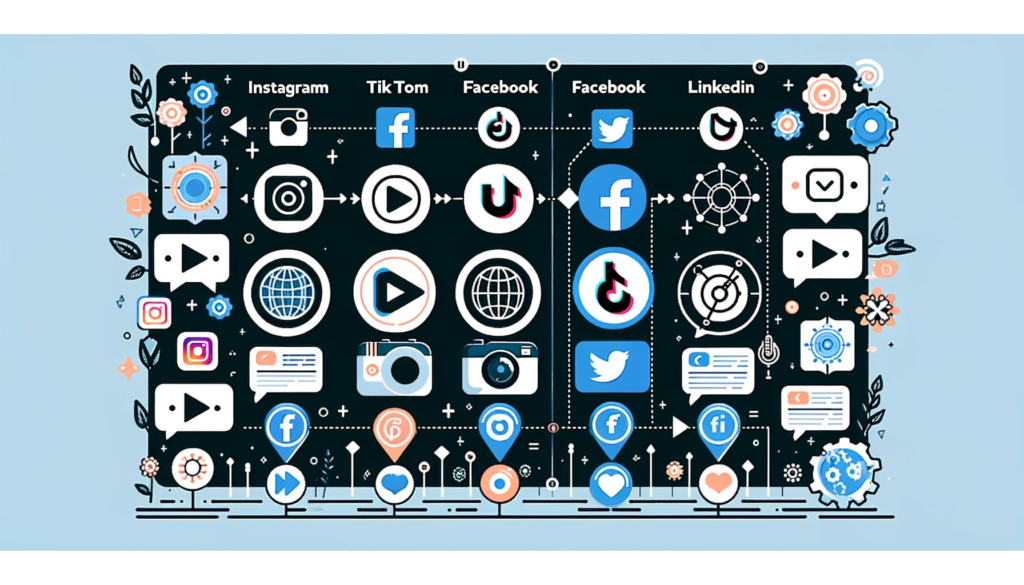
The landscape of social media is diverse, and each platform has its unique audience and content style. Understanding these nuances is key to crafting effective video marketing strategies.
Tailoring Content for Each Platform
Each social media platform requires a distinct approach to video content. What works on TikTok may not resonate on LinkedIn. It’s crucial to tailor your content to fit the culture and audience of each platform.
- Instagram vs. TikTok: Instagram videos often focus on aesthetics and storytelling, while TikTok values authenticity and humor.
- Facebook and LinkedIn: Facebook videos can be more diverse, catering to a broader audience, whereas LinkedIn videos often have a professional and educational tone.
- Case Study: Brand Z successfully adapted its strategy by creating inspirational videos for LinkedIn and fun, engaging content for TikTok, resulting in increased engagement on both platforms.
Integrating Videos in Omni-channel Marketing
Omni-channel marketing is about creating a cohesive brand experience across various platforms. Integrating video content into this approach ensures a unified brand message.
- Cohesive Strategies: Ensure your video content aligns with your overall marketing goals and messaging across all channels.
- Successful Examples: Company A showcases how to use omnichannel strategies by featuring teaser videos on Instagram, full-length versions on YouTube, and discussion threads on LinkedIn.
Best Practices for Social Media Video Marketing
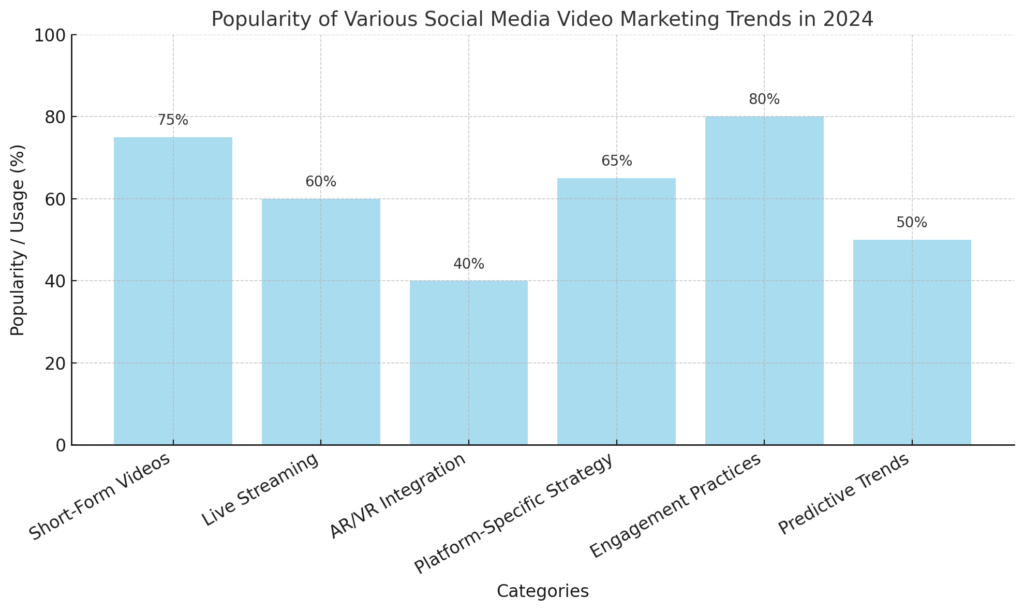
Creating engaging and effective video content is both an art and a science. Here are some best practices to ensure your social media videos not only capture attention but also drive engagement and conversion.
Creating Engaging and Shareable Video Content
The key to successful video content is engagement. Videos need to be compelling enough to not only draw viewers in but also encourage them to share.
- Storytelling: Every great video tells a story. Whether it’s a 15-second TikTok or a 2-minute YouTube video, the narrative should be clear, engaging, and relevant to your audience.
- Emotional Connection: Videos that evoke emotions, whether laughter, empathy, or inspiration, are more likely to be shared.
- Tips for Engagement: Include a strong opening to hook viewers, use visually appealing graphics, and include calls-to-action (CTAs) to encourage interaction.
Analyzing and Improving Video Performance
To maximize the impact of your video marketing efforts, it’s crucial to track their performance and iteratively improve your strategy.
- Key Metrics: Track views, engagement rates, share counts, and conversion metrics to understand your video’s performance.
- Tools for Analysis: Utilize analytics tools provided by social media platforms, or third-party tools like Google Analytics, to gain deeper insights.
- Continuous Improvement: Use the data gathered to refine your video content strategy continually. Test different formats, lengths, and styles to see what resonates best with your audience.
Predictions for the Future of Social Media Video Marketing

As we look toward the future, it’s clear that social media video marketing will continue to evolve, driven by technological advancements and changing consumer behaviors. Here are some predictions and preparations for what lies ahead.
Emerging Trends and Innovations
The future of social media video marketing is likely to see new trends and innovative approaches emerging, as technology continues to advance.
- New Video Formats: Expect to see more interactive and immersive video formats, such as 360-degree videos and augmented reality experiences.
- Platform Innovations: Social media platforms are likely to introduce new features and tools to enhance video marketing, such as improved analytics and creative tools.
- Expert Opinion: “The future of video marketing lies in personalization and interactivity. Brands that can leverage these elements will stand out,” notes John Smith, a digital marketing futurist.
Preparing for Changes in Consumer Behavior
Staying adaptable and responsive to shifts in audience preferences and behaviors is crucial for marketers looking to succeed in the dynamic landscape of social media video marketing.
- Understanding Audience Needs: Continuously research and understand your audience’s evolving preferences and behaviors.
- Flexibility in Strategy: Be prepared to pivot your video marketing strategy in response to new trends and consumer demands.
Conclusion: Trends in Social Media Video Marketing
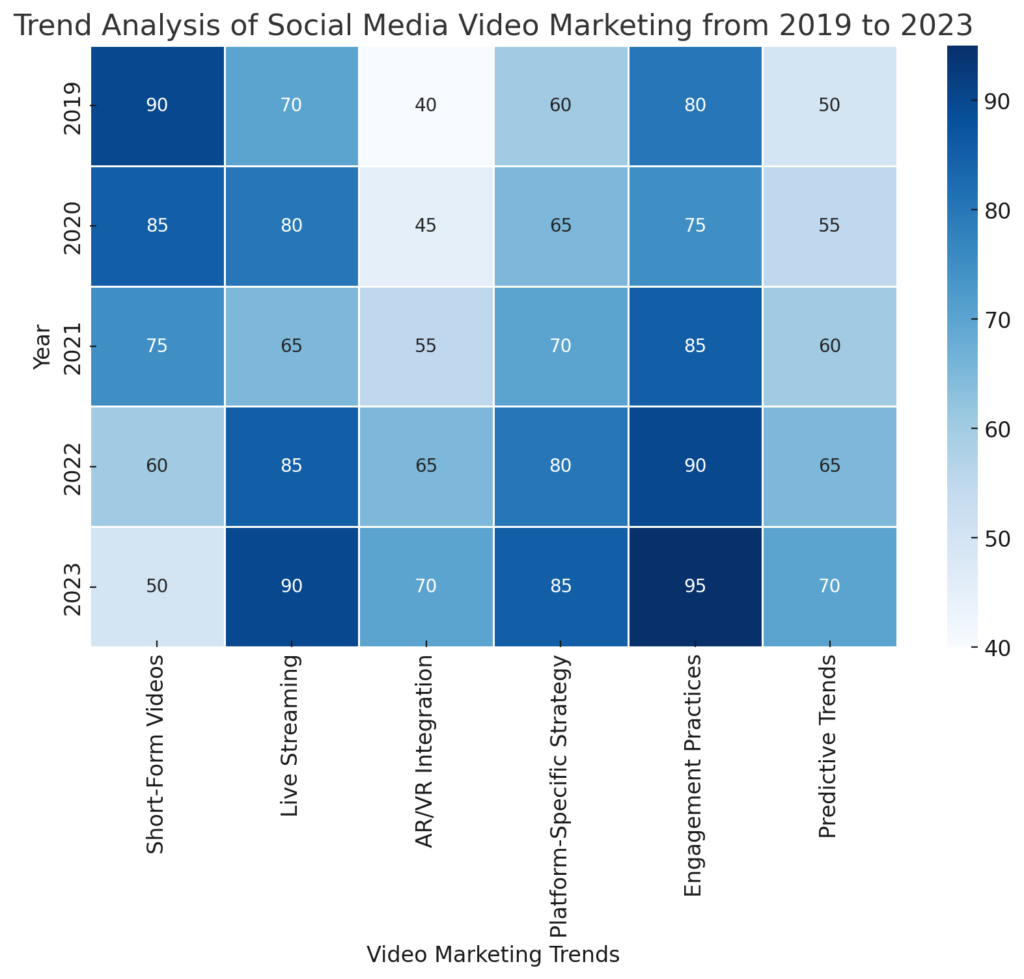
As we’ve explored, Trends in Social Media Video Marketing are diverse and ever-changing. From the rise of short-form videos and live streaming to the integration of AR/VR and the importance of platform-specific strategies, video marketing in 2024 is a dynamic and exciting field. By understanding these trends and best practices, brands and marketers can create compelling, engaging, and effective video content that resonates with their audience and drives business success.
FAQ: Trends in Social Media Video Marketing
What is the most popular type of video content in 2024?
Short-form videos have taken the lead in popularity. Platforms like TikTok and Instagram Reels have driven this trend, with their focus on concise, engaging content that fits into the busy lifestyles of modern consumers. These videos, typically ranging from 15 seconds to a minute, are not only easy to consume but also highly shareable, making them a favorite among both users and marketers.
How effective is live streaming for marketing?
Live streaming has become a powerful tool for marketers, offering real-time engagement with audiences. It’s particularly effective for product launches, Q&A sessions, and offering an insider view of events or behind-the-scenes actions. The immediacy and authenticity of live streams can significantly boost audience trust and engagement, making it a valuable component of a social media strategy.
Can small businesses benefit from social media video marketing?
Absolutely. Small businesses can leverage social media video marketing to compete with larger brands effectively. It’s a cost-efficient way to increase visibility, engage with a broader audience, and build a personal connection with customers. Even with limited resources, small businesses can create impactful videos that resonate with their audience.
What role does storytelling play in video marketing?
Storytelling is vital in video marketing as it helps create a deeper emotional connection with the audience. A well-told story can make a brand more relatable and memorable. Whether it’s a narrative about the brand’s journey, customer testimonials, or a fictional story that aligns with the brand’s values, effective storytelling can significantly enhance the impact of video content.
How often should I post video content on social media?
The frequency of posting video content depends on various factors, including your target audience, the specific social media platform, and your content strategy. However, consistency is key. Regular posting keeps your audience engaged and helps maintain your brand’s presence. It’s important to balance quantity with quality – ensuring each video adds value.
What’s the future of video marketing on social media?
The future of video marketing is leaning towards more personalized, interactive, and immersive experiences. Advances in AR/VR technology, AI-driven personalization, and evolving consumer preferences will shape future trends. Brands that can adapt to these changes and innovate in their video content will stay ahead in the game.
How important is video quality for social media marketing?
While high production value can be beneficial, authenticity and content relevance often play a more significant role in social media video marketing. Users tend to engage more with content that feels genuine and relatable, even if it’s not professionally produced. However, basic video quality should still be maintained to ensure clarity and a pleasant viewing experience.
Are there any privacy concerns with video marketing?
Yes, privacy concerns are paramount, especially with regulations like GDPR and CCPA. Marketers need to be mindful of privacy laws when creating and distributing video content. This includes obtaining necessary permissions for user-generated content and ensuring any data collection complies with privacy regulations.
Can user-generated content be part of a video marketing strategy?
User-generated content (UGC) is a powerful component of video marketing. It not only fosters community engagement but also serves as an authentic endorsement for your brand. Encouraging your audience to share their experiences with your product or service can lead to increased trust and broader reach.
What’s the best way to measure the success of video marketing?
Success measurement involves tracking a variety of metrics, such as engagement rates (likes, comments, shares), view counts, watch time, and conversion rates. These metrics can help you understand how well your content resonates with your audience and drives your desired actions. Analyzing these metrics over time also assists in refining and improving your video marketing strategy.


![Mastering Social Media Advertising: Strategies for Success[2024 Exquisite Guide] 18 Освоение рекламы в социальных сетях: Стратегии успеха[2024 Изысканное руководство]](https://www.knowskit.com/wp-content/uploads/2024/01/the-dynamic-world-of-social-media-ads-768x439.png)




